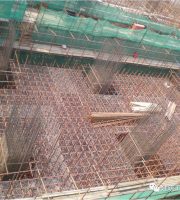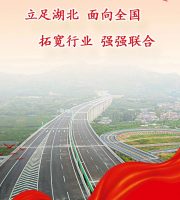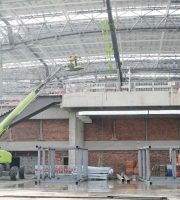Source: the copyright of Douding construction belongs to the original author
.
Today, I have sorted out the key points and precautions of reinforcement, formwork, concrete construction and water and electricity embedded construction in the construction stage of the main structure of the building
.
I hope you will benefit from it in the future construction process
.
1、 Reinforcement engineering (I) raw materials of reinforcement 1
.
Control points of reinforcement mobilization: 1) check whether the brand of reinforcement meets the requirements of the contract; 2) Check whether the product certificate and factory inspection report meet the national standards; 3) Whether the quality of steel bars meets the national standard is determined by observation method (the steel bars shall be straight and undamaged, and the surface shall be free of cracks, oil stains, granular or flaky old rust); 4) After the acceptance of reinforcement, fill in the material acceptance record form and keep the image data; 5) According to the sampling plan of the product, conduct sampling re inspection, issue the steel bar inspection report, and use it only after it is qualified
.
2
.
The control points of steel bar stacking: 1) the steel bar stacking site should be hardened to ensure smooth drainage; 2) It shall be stacked according to the grade, variety, diameter and manufacturer, with signboard indicating the origin, specification, variety, quantity and quality inspection status (to be inspected, qualified and unqualified); 3) In order to prevent corrosion of steel bars, the steel bars that cannot be used in time shall be covered with color striped cloth, and the steel bars shall be set on the ridge wall or square wood( 2) Steel processing control points 1
.
Steel processing template display area: 1) steel production template, including steel cutting, bending, screw processing
.
① Reinforcement cutting: A
.
ensure accurate cutting length; B
.
Check the quality of the cut steel bar, and cut off the part of splitting, shrinkage or serious elbow; C
.
The steel bars used for mechanical connection must be cut with toothless saw to ensure that the ends are straight and there is no inclined mouth, horseshoe mouth or flat head in the top incision
.
② When the steel bar is bent a, the end of the first grade (smooth round) steel bar is made into 1800 hook, and the length of the straight section after bending is ≥ 3D; B
.
1350 hook is made at the end of stirrup and draw hook, and the length of straight section after bending is not less than 10d and not less than 75mm (not less than 5D if there is no seismic requirement); C
.
90% at the end of reinforcement ° Hook, length of straight section after bending ≥ 12D (or meet the design requirements)
.
③ Thread processing a
.
the thread length is one more thread than 1 / 2 sleeve length; B
.
There were no false teeth, broken teeth and twisted ribs
.
2) The steel bars must be fully bound, and skipping and missing binding are strictly prohibited; Diameter ≤ ф 14 steel bars must be connected by binding, and electroslag pressure welding is prohibited; It is required to reserve joint bar before concrete pouring for formwork positioning bar, and direct welding on main bar is strictly prohibited
.
Reinforcement connection template, including binding, mechanical and welding connection
.
① binding connection: the lap length meets the specification requirements (1.2lae, Lae length: Grade III steel, grade I seismic, c30:40d, c35:37d, c40:33d), and the binding is not less than three times
.
② Mechanical connection: the number of exposed wire buckles after connection is not more than 1
.
③ Welding connection: a
.
the welding package around is evenly protruding from the surface of the steel bar ≥ 4mm; B
.
There is no burn defect on the steel bar head; C
.
The axis deviation shall not be greater than 0.1 times of the diameter of reinforcement and shall not be greater than 2mm
.
2
.
Control points for batch processing of reinforcement: 1) check the blanking list of reinforcement processing, and check whether the model, spacing, size and installation method of reinforcement in the blanking list are consistent with the requirements of drawings and specifications
.
2) Rust removal of steel bars oil stains, paint stains, scum and rust on the surface of steel bars must be removed
.
3) Steel bar straightening steel bar must be straightened by mechanical method (cold stretching is forbidden)
.
4) The steel bar cutting, steel bar bending forming and screw thread processing are controlled according to the sample standard( 3) Control points of steel bar installation 1
.
Control points of steel bar binding template area 1) steel bar binding template: including shear wall, column, beam, slab and stair binding template 1
.
Steel bar binding template a of shear wall and steel bar overlapping: the reinforcement part is set according to 50% overlapping percentage, and the overlapping length is 1.2lae (LAE length: Grade III steel, grade I seismic, c30:40d, c35:37d, c40:33d), Stagger 500mm; In the non reinforced part, the lap ratio can reach 100%, but the lap length is not less than 1.2lae; B
.
Spacing of steel bars: the spacing of steel bars shall be arranged in strict accordance with the requirements of the drawings, and the deviation shall be less than or equal to 10 mm; C
.
Number of hooks: set in strict accordance with the requirements of drawings and specifications, without missing binding, and the binding is firm and the bending direction needs to be staggered; D
.
Reinforcement positioning: wall vertical ladder reinforcement: the spacing is 1.2m, which can replace the wall vertical reinforcement, but it is one specification larger than the design diameter; Horizontal ladder bar: control the spacing and position of vertical bar, set a horizontal ladder bar, the height from the plate is not more than 300 mm, as the upper positioning bar turnover use; Double F-card and plastic cushion block: control the wall steel bar section and the thickness of steel bar protective layer
.
The double F-card spacing is 800mm in quincunx shape and must be firmly bound with the steel bar
.
The plastic cushion block spacing is 400mm in quincunx shape
.
The wall steel bar spacing shall not be greater than 10mm, and the thickness deviation of protective layer shall not exceed 5mm ± 5mm。 ② Column reinforcement binding template a, stirrup setting (stirrup shall be configured according to the design requirements, if there are no specific requirements in the design, the following provisions shall be met): when the longitudinal stressed reinforcement is lapped and connected, the stirrup densification area shall be set within the lap range of the main reinforcement, and the stirrup spacing in the densification area shall be 100 mm and 5 d (D is the smaller diameter of the lapped reinforcement); Stirrups at beam column joints must be set as required; When the shear wall reinforcement replaces the stirrup, all the column reinforcement surrounded by the original stirrup should be surrounded, and the draw hook should be set at the intersection with the column longitudinal reinforcement, and the hook angle should be 135 °。 B
.
Connection setting: the connection part of column longitudinal load-bearing reinforcement must be set above 1 / 3 clear height and above 500mm from the bottom of beam plate, the staggering distance of adjacent longitudinal reinforcement welding connection position shall be ≥ 35d and ≥ 500mm, and the staggering distance of mechanical connection position shall be ≥ 35d
.
C
.
All steel bar intersections must be bound
.
D
.
Place plastic cushion block on column stirrup
.
③ The length of beam reinforcement binding template a and straight anchor shall not be less than Lae; B
.
When the anchor is bent, the horizontal section shall not be less than 0.4lae, and the bending section shall not be less than 15d
.
When the anchor is anchored to the frame column, the horizontal section shall extend to the inner side of the longitudinal reinforcement outside the column; C
.
When the beam height is more than 450mm, horizontal constructional bars shall be set with spacing ≤ 200mm; D
.
Stirrups shall be provided according to the design requirements
.
When the design has no specific requirements, the stirrup densification area is set at the beam column joint
.
If the length is 500mm and 1.5 times of the beam height is larger, the distance between the first stirrup and the joint is less than 50mm; E
.
When the beam reinforcement is set in double rows, the spacing between the upper and lower rows of reinforcement is the larger of the diameter D and 25 mm
.
④ The binding template a of roof reinforcement and the spacing between upper and lower rows of reinforcement meet the design requirements; B
.
The hook length of the upper reinforcement shall not be less than the plate thickness h-30mm; C
.
The length of the lower reinforcement anchored into the beam shall not be less than 5D, and at least to the middle line of the beam; D
.
When the upper and lower steel bars are anchored into the shear wall, the length of steel bars extending into the shear wall is the greater of 0.35la and 5D, and at least passing through the center line of the wall
.
In addition, the upper steel bars bend the anchor downward in the shear wall for 15d; E
.
The upper reinforcement is supported by horse stool iron, and the thickness of reinforcement cover is controlled by erecting reinforcement
.
The lower reinforcement is supported by concrete cushion block, with spacing of 800mm-1000mm; F
.
At the lifting plate, the intersection length of reinforcement at the variable section is at least la.
.




